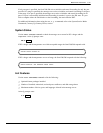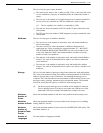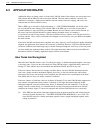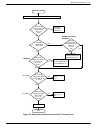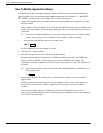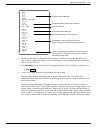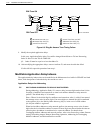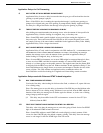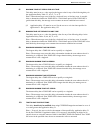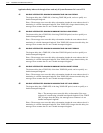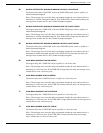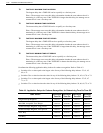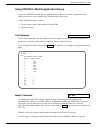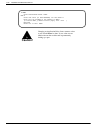
Maintenance Commands 6-51
Octel 200/300 S.4.1PB60019−01
Application Delays for Call Processing
WAIT AFTER OFF HOOK BEFORE GIVING PROMPT
Application Delay 8 causes a delay between the time the port goes off hook and the time the
greeting or system prompt is played.
Use — If the PBX is slow in sending the speech paths through, it could cause greetings or
prompts to be clipped (only part of the greeting or prompt heard). Modify Application Delay
8 to delay for a longer time before the message server plays the greeting or prompt.
TIMEOUT BEFORE LOOKING FOR RINGBACK OR BUSY
After dialing an extension number, the message server waits the amount of time specified in
Application Delay 19 before looking for a ringback, busy, or fast-busy tone.
Use — Some PBXs send a partial ringback or busy tone before starting the ringback or
busy-tone cycle. That would cause the Octel 200/300 to fail, because the partial tone would
not comply with any of the tone windows established in the Application Delay Table. Modify
Application Delay 19 for a longer time interval.
WAIT LONGER BEFORE LOOKING FOR RINGBACK
Application Delay 87 only works in conjunction with COS Attribute 30 — EXTENSION IS ON
ANOTHER PBX, WAIT LONGER BEFORE LOOKING AT TONES
. After dialing an extension
number, the message server waits the amount of time specified in Application Delay 87
before looking for a ringback, busy, or fast-busy tone.
Use — In some PBX environments, two or more PBXs might be connected through tie lines,
so users on a local PBX could dial an extension number on a remote PBX and be routed
directly to it, without going over the public network. The ringback tone from the distant PBX
is delayed while the PBXs set up the call. Without Attribute 30 and Application Delay 87, the
Octel 200/300 detects the longer silence as an answer and attempts to transfer the call, which
causes a failure. This COS attribute and application-delay combination allows the
Octel 200/300 to wait before looking for a ringback tone when calling certain extensions.
Application Delays used with Enhanced DTMF In-band Integration
DIAL TONE MAXIMUM OFF PERIOD
Used as the first delay when looking for dial tone after flash, or whenever E, expect dial tone,
is in a dialing string.
Use —The message server uses this delay to determine if the PBX has provided dialtone after
flash or whenever E is in a dialing string. If dialtone is not received from the PBX within the
duration of this delay, the message server flashes again for dialtone, or, in the case of dialing
strings, hangs up and tries again.
. This delay may be modified in the CPT environment to account for slow CPT (for
dialtone) from the PBX.
FIRST DIGIT TIMEOUT WHILE WAITING FOR DTMF CALL RECORD
This delay value is the time the message server waits after going off hook for the first DTMF
digit of an enhanced DTMF in-band call record.
Use — Some PBXs might not send DTMF call records (digits) in a timely manner. If this
occurs, the Octel 200/300 plays the default company greeting. This delay forces the message
server to wait longer for the first DTMF digit of the call record.
8
19
87
79
110



